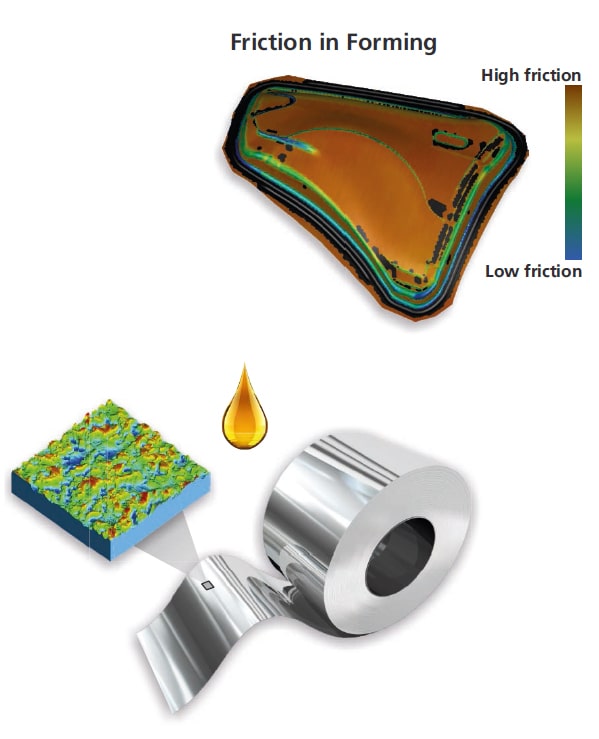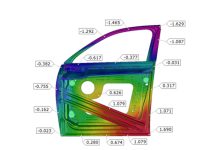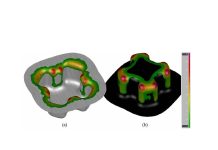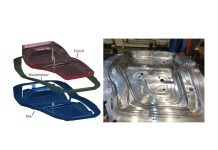A New Era of Accuracy for Sheet Metal Forming Simulation
A hidden demand was lurking under the surface in the sheet metal forming world. Over the last years, automotive OEMs have carried out a lot of tribology related measurements, on their own, searching after example friction effects. The fact is, they’ve held all of this data and in so many words “It sat on the shelf without any means to apply it directly.”
Now that’s about to change. With the new release of the TriboForm software, OEMs can finally reap the rewards of those years spent on experimental friction investigation. TriboForm is largely known for friction modelling that, when applied to software solutions, improves the accuracy of sheet metal forming simulations. This has already saved OEMs money lost on parts that are rejected in tryout and production.
 Originally, in TriboForm’s early release, users could select a tribological system to apply within their simulations, using one of the better FEA software such as AutoForm and Pam-Stamp and LS-Dyna. The software then enabled friction and lubrication modelling based upon a pre-configured default TriboForm libraries. “Such libraries contain models that were packaged into the software for our customer use. You could easily select a certain tribology system, containing a specific sheet material, lubricant and tooling type. The corresponding friction model was then exported into forming simulations, showing the true behavior of friction during forming operations, just as you’d see it in tryout or production” says Jan Harmen Wiebenga.
Originally, in TriboForm’s early release, users could select a tribological system to apply within their simulations, using one of the better FEA software such as AutoForm and Pam-Stamp and LS-Dyna. The software then enabled friction and lubrication modelling based upon a pre-configured default TriboForm libraries. “Such libraries contain models that were packaged into the software for our customer use. You could easily select a certain tribology system, containing a specific sheet material, lubricant and tooling type. The corresponding friction model was then exported into forming simulations, showing the true behavior of friction during forming operations, just as you’d see it in tryout or production” says Jan Harmen Wiebenga.
“The most common approach by our customers is still to use the friction models from the default TriboForm library within our software. But what if you have your own friction or surface topography measurements? What if all that data that’s been sitting in the shelf for several years can now be used? That’s where our new release comes in.”
In the new release of TriboForm users are able to import their own experimental data, according to what they are actually using in tryout or production. With this new functionality it’s possible to import two things:
Firstly, users can import their own experimental friction data. Some TriboForm customers have the ability to test and measure friction for their own materials and lubricants. Now they have the possibility to import the resulting values into TriboForm. They’ve measured these effects at a certain pressure, temperature, velocity etc. They are able to import those values into the TriboForm software and generate a corresponding friction model, giving them even more precision for their sheet metal forming simulations.
Secondly, users can import surface measurements derived from the sheet and tool topography. “Some of our users wish to get even deeper, by using the surface measurements taken from a sheet or tool surface” said Jan Harmen. Based on these two customized data sets, you can again generate your own friction model.
“With TriboForm it’s easy for users to now not only import the data, but also to store it. Because the major OEMs have a lot of friction data available it was only a matter of time that they would find a way to include this into their simulations. We have now delivered the means.”
The video below shows the new TriboForm software at work. You’ll see friction and confocal microscopy measurements performed and the subsequent importing of this data into the software. Click now:
“This is really a step forwards in terms of flexibility and usability of the software. We’d like to thank all customers already using the new software! Now the power in your hands and there are no limitations. You have the freedom to simulate exactly what you have before your eyes in tryout, on the shop floor and you get a whole new level of accuracy.”
You may also want to sign up for the free webinar presenting the software here.













